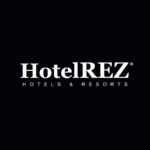 The hotel industry never rests for long, particularly when it comes to revenue management. There is always a new metric to consider, new ways to increase efficiency, and new strategies to boost profit.
The hotel industry never rests for long, particularly when it comes to revenue management. There is always a new metric to consider, new ways to increase efficiency, and new strategies to boost profit.
RevPAM is one of those metrics that are growing in prominence, changing the way hoteliers look at the earning potential of their property.
What is RevPAM?
RevPAM is a key performance indicator hotels use within their revenue management. It stands for revenue per available metre.
RevPAM is a metric that takes the entire space of the property into the equation, as opposed to simply looking at RevPAR or TrevPAR. This means hoteliers can get even more granular with their revenue management strategies.
Other metrics that take into account revenue outside of room charges include RevPOM (revenue per occupied metre) and RevPEC (revenue per event customer).
How to calculate RevPAM
RevPAM, as the name states, is calculated by measuring the revenue of the hotel per available metre.
Total revenue / divided by the total available square metre(s) of the space (m2).
For example:
$60,000 / 2000m2 = $30 per square metre.
Example: How your hotel can use RevPAM to boost revenue
Looking at RevPAM will allow you to recognise where you can start to improve the use of spaces in your hotel. For many hotels, meetings and events can make up 50% of total revenue.
Hotels which have spaces beyond accommodation rooms can optimise revenue and profits by creating and promoting a product offering that utilises those spaces.
Think about the following scenarios to get your creative juices flowing:
- If you have a large lobby space but aren’t driving any revenue in this area, it’s a wasted opportunity. If your hotel doesn’t have a bar or restaurant, you could use this lobby space on weekends for a pop-up bar or kitchen, inviting guests and the general public to enjoy the space. This will also spread the word about your hotel and attract more locals to stay with you.
- If you have meeting rooms that aren’t being utilised to their full potential, think about how you could still make money when they aren’t booked. Could you offer other services, such as massage, yoga, or various instructor-led classes?
- If your restaurant is consistently only half full, could you repurpose some of the space to add an additional amenity to your hotel, such as a games room for kids or a serviced mini-cinema experience that guests could book.
When you really start to brainstorm with RevPAM as a front of mind metric, it’s amazing how many opportunities you can find. Not just in terms of increasing income, but cutting costs too to maximise revenue.
Think about more than just your guest rooms, such as:
- Restaurants and bars
- Conference or meeting rooms
- Car parks and entrances,
- Lobby and front desk
- Common areas such as stairwells, elevators, hallways
- Amenities such as gyms, spas, or pools
RevPAM is an important KPI because it allows you to measure the full impact of your revenue management strategies. Often you’ll discover ways you can become more efficient and increase revenue across the entire space of your hotel.
Other important revenue management formulas
RevPAM is just one of many useful metrics you can use at your hotel to effectively measure success. Others include:
- RevPAR
- GOPPAR
- TrevPAR
- RevPASH
- EBITDAR
- ADR
- LOS
- ALOS
- OCCUPANCY
Measuring the impact of RevPAM strategies and tactics
The reason key performance metrics like RevPAM or RevPAR are so important is so that you can accurately track the impact of your revenue management decisions.
Understanding which metrics to look at and how to calculate them is a good start and in most cases, using hotel software with revenue management capabilities will be super helpful.
Without tracking the strategies you put in place and measuring them against key indicators, it will be impossible to know where increased profit or losses might be spawning from. Data analysis is important to undertake regularly so you know which lever to pull (and when) in order to make a difference to your revenue.
Did adding that honeymoon package increase RevPAR or is it simply adding expenses? Are the morning yoga classes increasing RevPAM or is there another activity that would work better? Was that summer promotion optimal?
Only once you measure results accurately can you take actions that improve your results in the future. Afterall, some tactics are better than others, while some will be effective at particular times or when targeting particular guests.
It’s crucial to know not only if something worked or didn’t work, but why. Factor this question into all your analysis. Why didn’t guests buy this package? Was it a case of the price leading to a lack of perceived value or was it the contents of the package itself? Or was it not applicable to your typical guest demographic?
How to create an effective revenue management plan
Today, an effective revenue management plan means thinking about much more than the rooms and offers you sell. Your plan must revolve around your entire property, which is of course why RevPAM has risen to prominence.
Traditional revenue management focuses on selling the right service to the right guest at the right time, for the right price. This still holds true of course but it is about more than your inventory now.
Your whole property experience needs to fall into place. If you can base your plan around a concept that uses the hotel’s full spacial potential and brings guests together as a community, you’ll be on the right track. For example, SACO is just one brand leading the way in this respect, creating an ‘urban sanctuary’ for guests.
SiteMinder’s Karla Brooklyn said it was important to think customer first, offering some tips for hotels:
- Identify the spaces and opportunities available to them, looking boldly at where unexpected results may be gained
- Be clear on the customer segment they want to attract. Find help on attracting the right guest segments here.
- Understand your competition and what your advantage is
- Don’t get overwhelmed and seek the right tools and partners to achieve your goals
Once your plan is in place don’t forget assessment and feedback. You need to be constantly evaluating performance and improving your plan on the run. You need to be agile and dynamic with every revenue decision you make, so you can take advantage of market changes if necessary.
Perhaps one of the most important factors to remember is the impact of different departments in your hotel. Your plan should involve an overall objective for your business, and not create a conflict of interest between departments. In other words, don’t solve one problem by creating another.
Article was first published HERE































